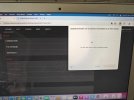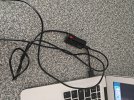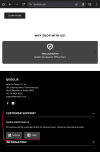Basically, all the filters combine to make the Total EQ Curve - which is the "total end effect", it's like addition and subtraction. In your specific example the 105Hz Low Shelf would bring the response above the target curve at the 73Hz point, so therefore Oratory put in the negative dB filter at 73Hz to allow the response to come back to the target curve at that point, because remember I said if you didn't have that there & just had the 105Hz Low Shelf filter then the end result would be above the target curve in that 73Hz area. Adding overlapping filters is just like shaping & sculpting the final result, the filters will almost always overlap each other so they each contribute their own effect (addition/subtraction) to any given point on the frequency response. So the end result of the EQ (Total EQ Curve) is not as simple as just looking at one individual filter, they all contribute to the end effect.




